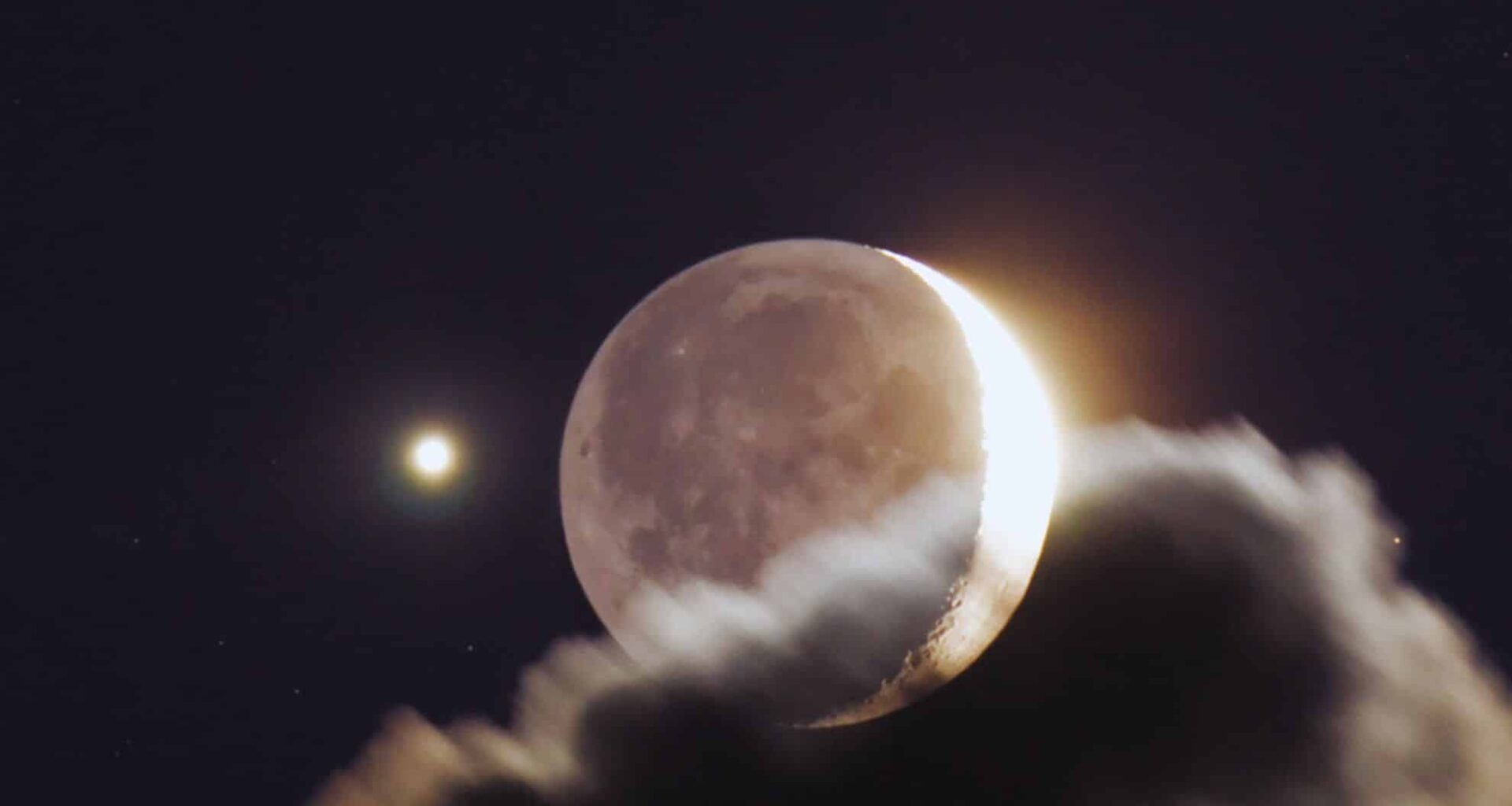On July 28, 2025, the night sky will come alive with a rare celestial display. A stunning crescent moon will align closely with Mars, offering a mesmerizing sight for skywatchers. As highlighted by Live Science, the evening will be further enhanced by multiple meteor showers peaking that night, making it one of the best opportunities for stargazing this summer. Whether you’re an experienced observer or simply curious about the cosmos, this extraordinary event promises to be a spectacle you won’t want to miss.
The Magic of the Conjunction: Crescent Moon and Mars Aligned
The night of July 28 will present a rare and beautiful conjunction between a crescent moon and Mars, creating an unforgettable sight in the sky. About 45 minutes after sunset, the crescent moon and Mars will appear very close to each other, positioned just one degree apart—approximately the width of your little finger held at arm’s length. The moon will be only 19% illuminated, offering a delicate, glowing crescent, while Mars, the Red Planet, will be visible as a distinct reddish dot in the twilight sky.
Mars, though past its brightest point for the year, will remain a prominent feature, especially in the clear, dark skies of July 28. Meanwhile, the moon will also exhibit Earthshine, a soft illumination on its far side caused by sunlight reflecting off Earth. This subtle glow adds to the beauty of the scene, creating a ghostly light on the moon’s dark side, making the moon-Mars conjunction a fascinating sight to behold.
Meteor Showers Peaking on July 28
In addition to the spectacular moon-Mars conjunction, the night will also be an excellent time to watch meteor showers. The Piscis Austrinid meteor shower will be at its peak during the early hours of July 28, with up to five meteors per hour visible. While this is a relatively minor meteor shower, it adds an extra element of excitement to the evening.
The Delta Aquariid and Alpha Capricornid meteor showers will also be near their peak overnight from July 29 to 30. The Delta Aquariids can produce up to 20 meteors per hour, and the Alpha Capricornids contribute an additional five per hour. This combination of meteor showers alongside the moon and Mars will provide a multi-layered celestial show that any skywatcher will appreciate.
Perfect Viewing Conditions
The key to experiencing this stunning sky show is to find a location with minimal light pollution. A Dark Sky Place is ideal for the best visibility, but even areas away from city lights will offer a good vantage point. The moon and Mars will be visible shortly after sunset and will remain in the sky for hours, making it easy for anyone to catch a glimpse of the spectacle.
Since the moon will set a couple of hours after sunset, the sky will remain dark for a few hours, giving you the perfect opportunity to view the meteor showers without the moon’s brightness interfering. The best views of the moon-Mars conjunction will be from a clear, unobstructed location, facing west, where you can see the two celestial objects as they align in the sky.
Tips for an Optimal Stargazing Experience
For those planning to witness this extraordinary sky event, there are a few tips to ensure the best experience. First, give your eyes at least 20 minutes to adjust to the darkness before you begin observing. This will enhance your ability to spot faint meteors and see the subtle Earthshine on the moon.
Avoid looking at bright lights, such as your smartphone, as this can disrupt your night vision. Also, bring a comfortable blanket or chair to enjoy the sky comfortably, as stargazing often requires long hours of stillness. Be sure to check the weather forecast in advance to ensure clear skies on the night of July 28—cloud cover could obscure the celestial event.

